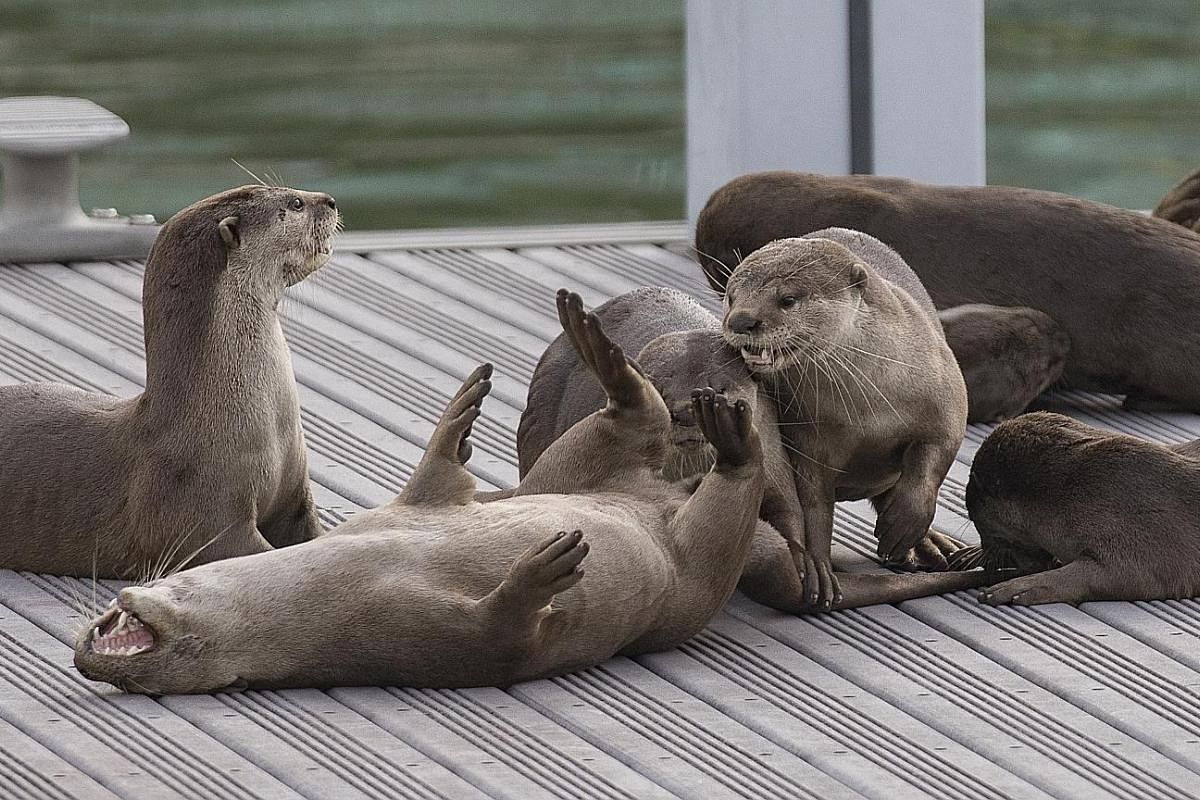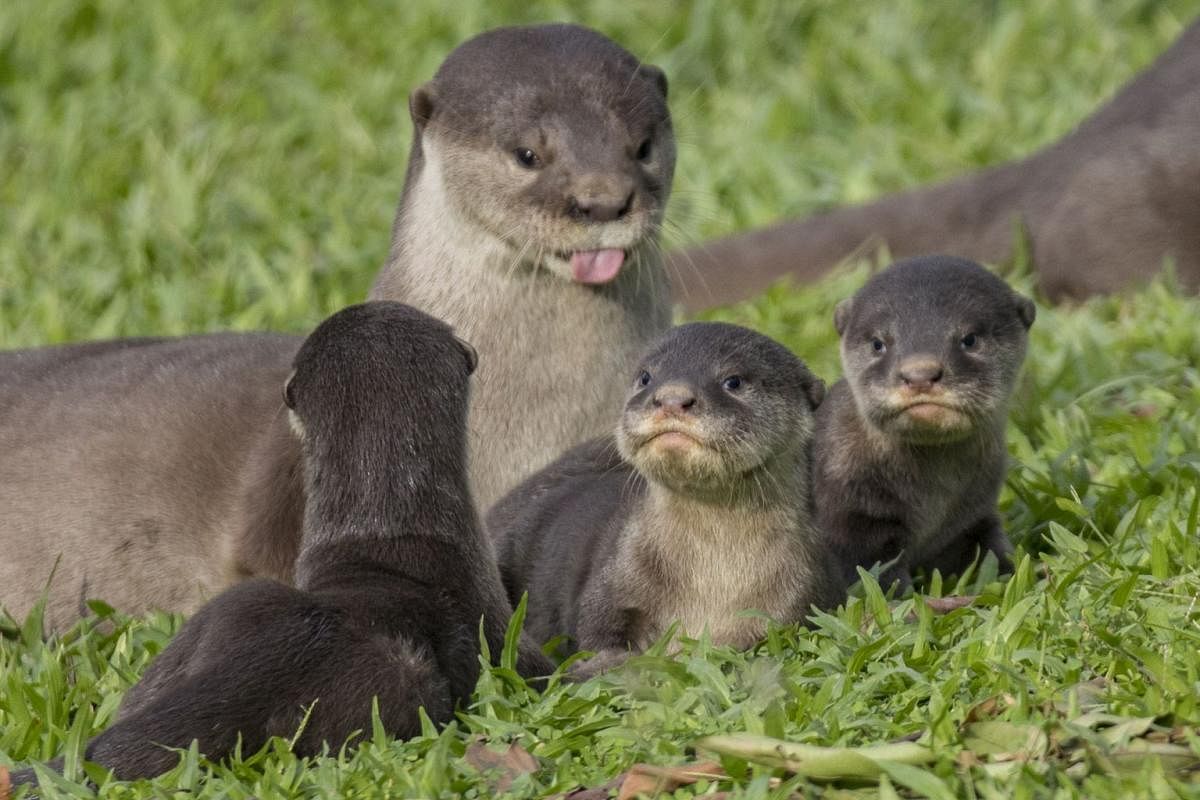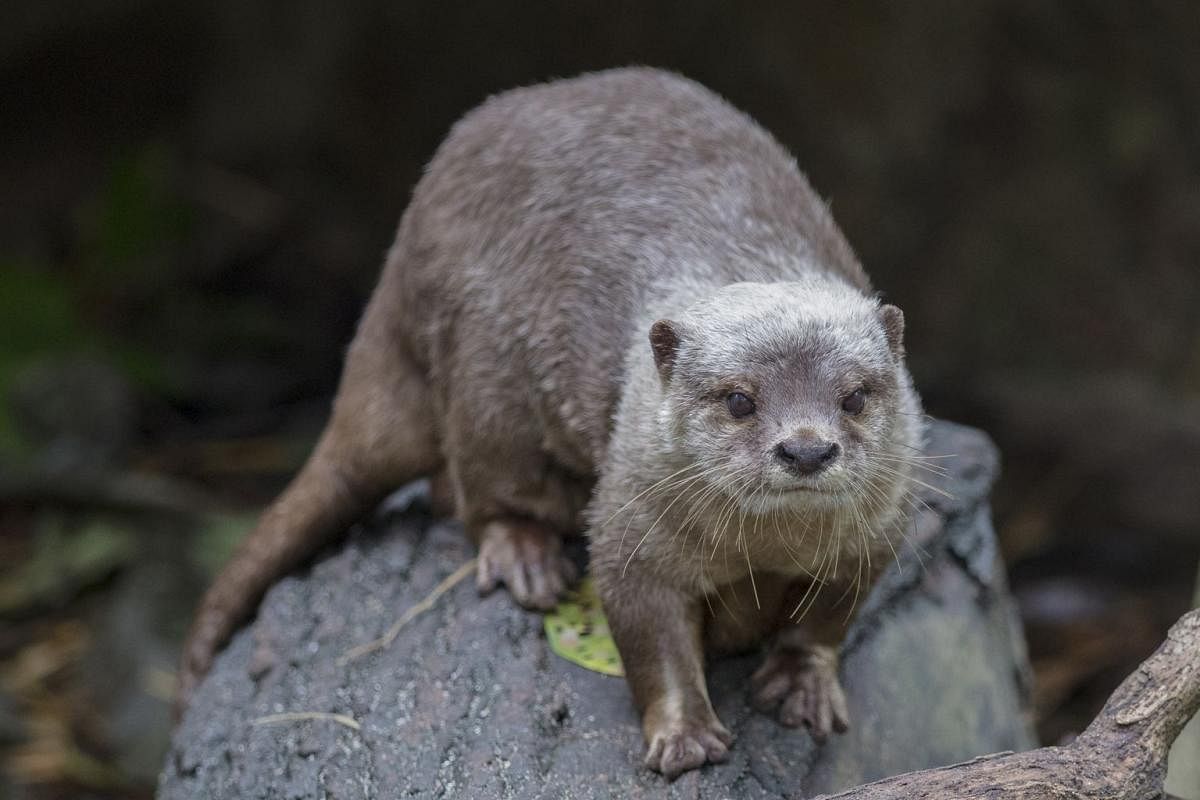Surprising branch in Singapore's otter family tree
Singapore's otters found to be hybrids of two species, the first known case in wild otters



PHOTO: BERNARD PHOTOJOURNALS

The smooth-coated otters entrancing Singapore are most probably the descendants of two different species caught up in an unconventional romance.
Research indicates that the creatures frolicking in our waters could be the result of a fraught union.
Picky small-clawed otter females had initially rejected smooth-coated males, but their fruitless search for suitable mates of their own species eventually led them back to the smooth-coated males and an aquatic marriage of convenience.
Researchers do not know if this original union occurred in nature or captivity - that is the subject of further research - but it is quite the story behind the world's first known case of wild otter hybrids.
Research assistant Meryl Theng and her team made the discovery that was published last year, as part of an international study led by Italy's University of Pisa. Funded by the university and the National Geographic Society, the team studied smooth-coated otter samples from all over the world in order to understand their population movements and how to better conserve them.
They also examined the dung and skin of 18 samples from five locations around Singapore, with surprising results.
"We questioned what could have gone wrong. Was spraint (dung) from the wrong species collected? Was there contamination of small-clawed otter DNA?" said Ms Theng, 28. Only after they verified that they did not make any mistakes, and after another colleague got the same results, did they realise that they were on to something.
Singapore has two species of otters. Smooth-coated ones grow up to 1.2m long and 11kg in weight. They are the more familiar ones here and have been increasingly seen since the 1990s in places like Sungei Buloh, Bishan-Ang Mo Kio Park and Gardens by the Bay.
Small-clawed otters weigh around half as much, at 5kg, and in recent decades have been seen only on offshore islands such as Pulau Tekong and Pulau Ubin.
Ms Theng said there are several reasons why the two species could have bred with each other, the top contender being the "picky female" theory.
Singapore's otters do not look like hybrids because their genes are not split equally between the smooth-coated and small-clawed otters.
Rather, the original offspring of the two species continued breeding with smooth-coated otters across several generations, meaning that the descendants did not look like small-clawed otters at all, though they kept some of their genes, said Ms Theng.
One implication of this is pure classification - Ms Theng said the two otter species are more genetically similar than previously thought and so should be recognised as such by taxonomists.
Biology lecturer N. Sivasothi, who heads community group OtterWatch, said that the research raises interesting questions.
"How extensive is this occurrence in southern Malaysia and in Singapore? Should a threatened species be protected if there is evidence of hybridisation? Should hybrids be allowed to persist if they fill an ecological role?" he asked.
"This will be discussed by the otter specialist group of the International Union for Conservation of Nature's Species Survival Commission at a proposed workshop for South-east Asian otter researchers."
At least 60 now in Singapore
Singapore's smooth-coated otters are perhaps one of the country's favourite wildlife mascots, remaining popular even after a provoked otter bit a five-year-old girl two weeks ago.
Yet, despite being native to the region, they had disappeared from the country's consciousness until relatively recently.
Habitat loss and reclamation works drove them from the nation's waters in the 1970s. But as Singapore worked to clean up pollution in its waterways and as the neighbouring shores of Johor became developed, the furry swimmers began moving back.
There are now at least 60 otters in Singapore, found in places such as Pasir Ris, Sungei Buloh, Bishan-Ang Mo Kio Park, Pulau Ubin and Gardens by the Bay.
As their numbers grew, more people started photographing and recording their movements, including groups such as OtterWatch.
However, while the smooth-coated otters have seen their star rise, the small-clawed otters have waned in status.
These otters weigh about half as much as their more famous counterparts and have slowly disappeared from Singapore.
Now, they are suspected to be visitors rather than residents in Singapore's waterways and have been recorded only on offshore islands such as Pulau Tekong and Pulau Ubin.
Correction note: This story was updated for clarity.
Join ST's WhatsApp Channel and get the latest news and must-reads.
A version of this article appeared in the print edition of The Straits Times on January 11, 2018, with the headline Surprising branch in Singapore's otter family tree. Subscribe

